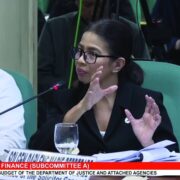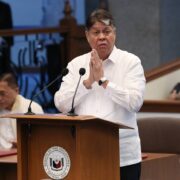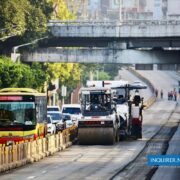Billions down the drain

Just one weekend of intense rainfall, and there it was, a terribly familiar sight—Metro Manila, the country’s capital, swamped to a standstill by widespread flooding.
The rains, brought by the southwest monsoon or “habagat,” inundated streets and neighborhoods sometimes to chest-deep levels, with over 500 areas in the metro getting hit by floods, according to the Metro Manila Development Authority (MMDA).
As tens of thousands took refuge in evacuation centers and many more found themselves stranded on impassable roads, unable to get home, Filipinos could only vent their ire and frustration on social media at the lack of improvement in the country’s infrastructure despite the billions poured every year into flood-mitigation projects.
It had been only a year since the exact same scenario played out. When Supertyphoon “Carina” lashed the Philippines in July 2024, the flooding was of such proportions that the lawmakers who allocate the budget every year, including for flood control, were roused to summon the MMDA and the Department of Public Works and Highways (DPWH) to have them explain where all that money went, since clearly whatever they were doing for so-called flood management wasn’t working.
Per estimates made in 2024, the government has spent a staggering P1.2 trillion on flood control projects since 2009. The DPWH’s flood budget has increased by leaps and bounds over the years—from P42.2 billion in 2015 to P244.5 billion in 2024, or an increase of P200 billion. This year, it allocated P254.29 billion to its flood management program, which is 32.1 percent of its whopping P1.007 trillion budget for fiscal year 2025.
P1.4 billion a day
According to Sen. Joel Villanueva, the government is spending P1.4 billion a day on flood control programs, and yet that massive cost is nowhere being felt by ordinary Filipinos who are forced to survive increasingly more powerful storms and rainfall and more severe damage each year.
To address the recurring crisis, the senator has reiterated his call for a “comprehensive and integrated flood control program”—which should come as a shock to outside observers. Since the Philippines is walloped by some 20 typhoons a year and Metro Manila in particular is prone to inundation due to its ancient waterways now smothered by unchecked urban sprawl, such a program should have been in place decades ago—but there isn’t?
Yes, none. DPWH Secretary Manuel Bonoan made that startling revelation at a hearing of the Senate committee on public works in August last year. For all the billions poured into the program, there is no single integrated flood-control master plan for the country, he admitted. But there are 18 separate “masterplans” for major river basins that are, as touted by an agency press statement, “tailored to address the specific characteristics and needs of each area, ensuring more efficient and targeted management of flood risks.”
Colossal problem
As for the 5,500 “completed projects” that President Marcos had earlier mentioned in his State of the Nation Address that year? Those were just “immediate projects and engineering interventions … to provide immediate relief and protection to low-lying areas,” said Bonoan.
In short, more of the short-term, ad hoc, provisional solutions to a colossal problem that cripples the nation every time, and that promises to become only more destructive with climate change.
That patchwork mentality accounts for why, for instance, Metro Manila’s drainage infrastructure has been allowed to deteriorate over the decades with no major overhaul or modern upgrade. Nearly 70 percent of the metro’s drainage network is “very old” and can no longer adequately flush out excess water, even though pumping stations may be fully operational, said Bonoan in July.
It’s a system, of course, that’s also been ideal for corruption and malfeasance, as the piecemeal proceedings provide greater opportunities to skim from the vast public funds available.
Cornerstone achievement
The latest catastrophic flooding should prompt the Marcos administration to realize that, in its remaining three years, one cornerstone achievement it could work on is an honest-to-goodness, long-term program that finally addresses, in an effective, responsive, science-backed, properly engineered way, this intractable problem.
There was, in fact, a P351-billion “master plan” for flooding that was greenlighted during the administration of former president Benigno Aquino III in 2012, but only 30 percent of it had been completed, according to the DPWH.
Does President Marcos have it in him to transcend the Aquino surname and revisit the work dispassionately, implement what’s good in it, and ensure that this essential legacy project, now with his name on it, begins to function at last for all citizens?
Filipinos do not deserve the horrific, dehumanizing ordeal they have to go through every time the heavens simply open up. They will have reason to remember this administration fondly if it does its mightiest to ease their burden in that regard.





















PH nutrition programs: Too little, too late